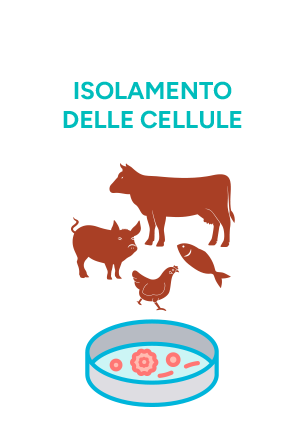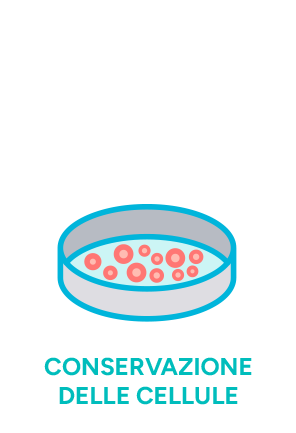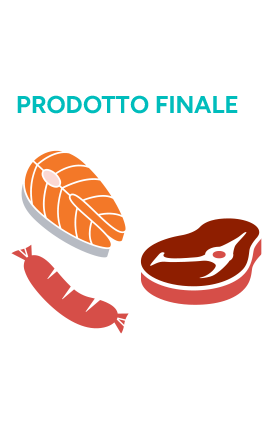CULTIVATED MEAT
“Cultivated Meat” is obtained from animal tissue grown independently from the animal through the cultivation of animal cells such as bovine, poultry, fish, etc.
The production of this food item consists of taking a small tissue sample from genuine animals through a harmless procedure and then later multiplying the cells that make up meat (muscle, fat, and connective tissue) in a cultivator, similar to a fermenter used for beer production.
It is produced in a sterile environment with precise temperatures and sufficient nutrients (water, amino acids, sugars, fats, vitamins and minerals) for meat growth, triggering a mass of minced meats identical to that of livestock. This can be used as is for products like sausages and hamburgers, or processed into a structured tissue similar to a steak or fish fillet. As such, its production is comparable to the cultivation of plants in a greenhouse. This process results in large quantities of meat that can have the same composition and nutritional value as conventionally produced meat.
This product is still not broadly available, with its commercialization solely being authorized in a few countries such as Singapore, the United States, and Israel. There are also many interesting experiments such as “The Chicken”, a restaurant in Tel Aviv that has been serving cultivated chicken to its customers for several years.
Currently under consideration from EFSA (the European Food Safety Authority), cultivated meat is championed for its potential to eliminate many problems associated with conventional meat production. This includes environmental degradation, antibiotic resistance, and ethical considerations of animal slaughtering.












